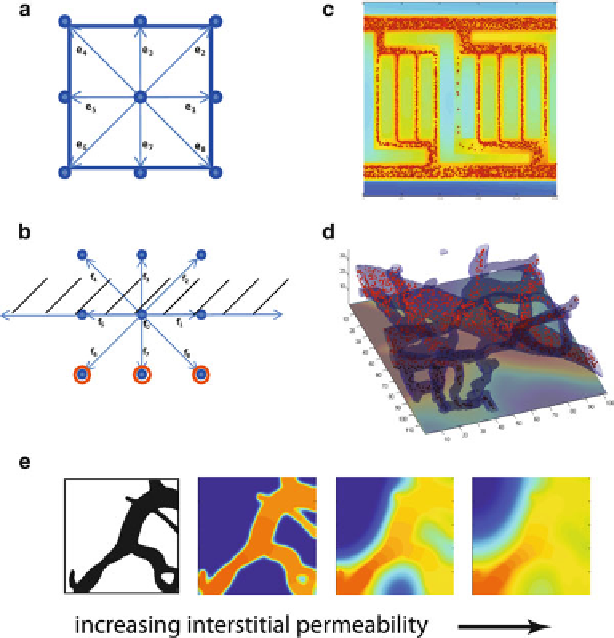Biomedical Engineering Reference
In-Depth Information
Fig. 2
Simulating vessel network dynamics. (
a
) LBM discretized velocities. (
b
) Boundary
treatment in LBM. (
c
) A two-dimensional idealized network with flow from left to right in the top
vessel (arteriole), from right to left in the bottom vessel (venule) and from top to bottom through the
capillary bed. The particles delivering oxygen are
red
, and the color map gives the oxygen profile
in the tissue. (
d
) Flow and oxygen transport from tumor vasculature in three-dimensions. The
vasculature of a U87 glioma growing in a mouse was traced using techniques described in [
89
]. (
e
)
Simulating intravascular and interstitial transport of drugs with varying diffusivity. A portion of a
tumor network was traced and the model simulates flow through the network and interstitial space.
By changing the bounce-back conditions at nodes outside the vessel boundary, we can simulate
varying levels of interstitial diffusivity
Central to the lattice-Boltzmann method is the single-particle distribution function
f
. It describes a fictive particle's state in terms of a statistical ensemble with a
measurable probability of being observed with a certain position
x
and momentum
p
at time
t
. This distribution function is discretized to have a finite number of velocity
components confined to a regular Cartesian lattice (Fig.
2
a).
The choice of lattice structure is classified according to the
DnQm
scheme.
Here,
D
specifies the dimension and
Q
the number of discrete velocities. In two
dimensions the
D
2
Q
9 lattice is preferred, i.e., two-dimensions with 8 velocity
components linking nearest-neighbor lattice nodes plus one velocity reserved for
(
p
,
x
,
t
)

Search WWH ::

Custom Search